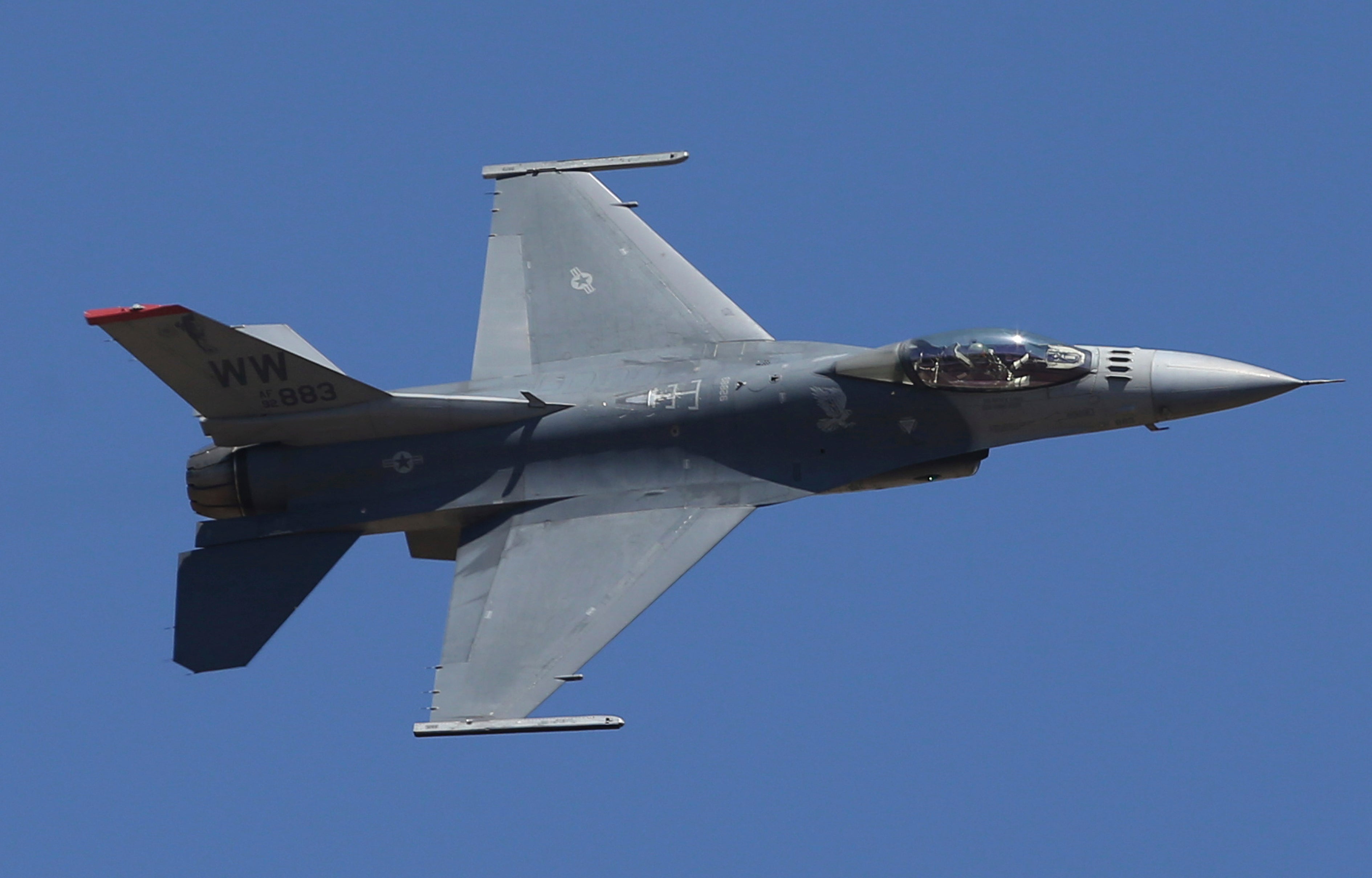The Russian glide bombs changing the face of the war in Ukraine
Winged explosives weighing up to 1,500 kilograms – and nicknamed the ‘building destroyer’ – have had a devastating impact wherever they have been used, writes Tom Watling. Kyiv is battling them as best it can but needs Western allies to step up and provide more weapons, air defences and ammunition


In a Ukrainian stronghold near the front line, less than 20 miles from the eastern city of Donetsk, a winged bomb is seen hurtling towards a multistorey building.
The 1,500-kilogram explosive hits the structure in the town of Krasnohorivka, erupting into a fireball before engulfing the whole building in a plume of grey and black smoke.
The camera, filming from several hundred metres away, shakes as the ground beneath it rocks from the aftereffects of the explosion.
When the smoke subsides, the building has been completely destroyed.
This footage is one of the latest examples of Russia’s deadly new weapon, one that is proving devastating for Ukrainian defensive positions on or near the front line.
The causes of recent Russian advances in Donetsk are multifaceted – Ukraine is facing weapons and ammunition shortages as Western allies drag their feet over fresh funding and military aid – but Moscow’s newly modified FAB-1500 warheads (the number relates to its weight in kilograms) are doing plenty of damage.
Cities such as Kharkiv, Ukraine’s second-largest, have been hit by glide bombs, as well as border towns in regions such as northeastern Sumy. Russia has been dropping hundreds, likely thousands, of the weapons in recent weeks. Moscow dropped 700 glide bombs in six days at the end of March, the Ukrainian foreign minister Dmytro Kuleba said.
Ukraine also uses guided bombs similar to the FABs, known as the joint direct attack munition system (JDAM), but the US-made weapons are in much shorter supply. John Foreman, the former UK defence attache to Moscow, describes the FABs as less effective than the JDAMs but a much cheaper weapon and one that is ultimately much more readily available to Russian forces than the JDAMs are to Ukraine.

The Russian warhead is a modified version of Soviet-era FAB bombs, the first of which, the FAB-250, was designed in 1946. These models are air-dropped warheads, carried by fighter jets, with a significant blast impact. But unlike its predecessors, all of which were especially powerful, it has been fitted with wings that allow it to fly towards its target, thereby converting it into a guided, as opposed to unguided, explosive.
The FAB-1500 (ФАБ-1500) is the latest iteration. It includes 675kg of explosives, can be fired from between 40km and 70km away from its target, and has a destruction radius of 200 metres. It has been nicknamed the “building destroyer” by Russian war bloggers.
“Fundamentally, they’re dumb unguided Soviet-era bombs with smart winglets added to them to attack fixed targets with a degree of precision,” Foreman, the former attache, says. The bomb can also have its course corrected using satellite or laser-based navigation, improving its accuracy.
A Ukrainian soldier from the 46th Separate Airmobile Brigade, which is based in the Donetsk region, has described the effect of these bombs as “hell”.

He told CNN: “The damage done by it is very serious. If you survive, you are guaranteed to have a contusion. It puts a lot of pressure on soldiers’ morale.”
There are three reasons they are proving so deadly. Firstly, their explosive impact is significant compared to artillery and munitions otherwise used on the front lines, owing to their size and weight.
Secondly, they can be fired from a distance of around 40km (25 miles), meaning Ukraine is forced to use longer-range missile interceptors that are in shorter supply. The modifications of these old bombs are cheap to carry out.
Ultimately, says Justin Bronk, a senior research fellow at the Royal United Services Institute (Rusi) think tank: “Russia certainly has the capacity to produce more glide bomb kits for older FAB series bombs than Ukraine has to resupply its surface-to-air missile (SAM) systems’ missile ammunition.

“So shooting them down directly isn’t a sustainable strategy.”
When Russian defence minister Sergei Shoigu visited a weapons manufacturing plant suspected of building these FABs in January, the director of the plant near Moscow claimed that productivity had increased by 40 per cent and they had moved to 24/7 working hours. His quotes should be taken with a pinch of salt, given that both sides – particularly Moscow – will seek to portray its war machine in the best light possible. But it is clear that the FAB weapons have become a priority.
The first rumours of the Fab-1500s started appearing in late September when a Kremlin-approved military blogger named Fighterbomber, believed to be a pilot in the Russian Air Force, claimed that testing of the bombs was nearly complete.
Two months later, in November, the head of the Ukrainian Air Force, Mykola Oleshchuk, warned that there were “signs of preparation for the mass deployment of 1,500 kg FABs”.

Videos then started appearing more frequently online showing the use of these FABs, particularly in the Avdiivka direction in eastern Ukraine.
That town was taken over by Russian forces in mid-February, after Ukrainian troops withdrew. Defensive lines had sustained dozens of FAB attacks a day for weeks. It was the first time Ukraine had been forced to pull back from a position around a town or city in nearly a year.
Maksym Zhorin, the deputy commander of Ukraine’s 3rd Separate Assault Brigade, who were the last soldiers left in Avdiivka before it fell, described how Russia was dropping between 60 and 80 of these bombs every day. Ukrainian estimates suggest not a single building in the small city remained intact by the time the Russians moved in.
“These bombs completely destroy any position. All buildings and structures simply turn into a pit after the arrival of just one,” he said.
Russian forces appeared to confirm this when another Kremlin-approved blogger, Military Informant, said they had “significantly increased the rate of use of aerial bombs” in early March.
“It literally does not allow the Ukrainian armed forces to survive and leads to noticeable losses in manpower and territory,” the channel claimed.
As Ukrainian troops withdrew from the city, and were forced into moving from at least three more nearby defensive positions, air force spokesperson Yuri Ignat said Russia was using these bombs to hit fleeing soldiers. “Guided glide bombs are also flying further behind our defenders to hit rear command posts, rear supplies, ammunition and so on,” he said.
Ukraine is trying to tackle the threat as best it can. Kyiv’s air force has claimed to have destroyed at least 12 Russian fighter jets capable of delivering these bombs during fighting in recent weeks. Facing difficulties in dealing with the bombs once launched, they hope to disrupt the aircraft delivering them in the first place. But it is difficult to verify these reports and Western officials caution against taking these claims at face value.
As with other parts of the front line, the broader answer would come from more military support from Kyiv’s allies. The US is said to be working on a military aid package while Congress is still struggling to pass a broad set of support over domestic political squabbles.

Ukrainian military officials maintain that the delivery of US-made F-16 fighter jets – several of which are due in mid-summer from US allies in Europe – will alleviate the problem by making it more risky for the Russian jets tasked with delivering the bombs to take off.
But Bronk, the think tank analyst, is unsure. “F-16s are unlikely to provide any significant improvement in interception capabilities against Russian glide bomb attacks,” he says.
“The fighters and strike fighters lofting the glide bombs are doing so at release distances many tens of kilometres behind the Russian front lines, meaning F-16 pilots would need to get far too close to Russian ground-based SAM threats to reliably engage them. Even then, they would need to be in exactly the right place at exactly the right time to acquire and fire on a Russian jet just as it started to climb for a lofting release.”
Foreman, the former UK defence attache to Moscow, meanwhile, suggests Ukraine may have to either move its ground-based air defences forward to try to stop these attacks, or have them bolstered by allies.
The fact remains that without additional Western military support packages, there’s only so much Ukraine can do. As Kyiv has repeatedly said, it needs Western allies to step up.
Join our commenting forum
Join thought-provoking conversations, follow other Independent readers and see their replies
Comments
Bookmark popover
Removed from bookmarks